Our Place is finally releasing a tableware collection to match its best-selling Always Pan colour
Sage is bound to be a huge hit this summer
 REAL ESTATE
REAL ESTATE
 REAL ESTATE
REAL ESTATE
 REAL ESTATE
REAL ESTATE
 REAL ESTATE
REAL ESTATE
 REAL ESTATE
REAL ESTATE
 EVENT
EVENT
 LANDSCAPE
LANDSCAPE
 LANDSCAPE
LANDSCAPE
 CONCERT
CONCERT
 LANDSCAPE
LANDSCAPE
 TRAVEL
TRAVEL

REAL ESTATE
Residential, Commercial, Interiors

LANDSCAPE
Landmarks, Cityscape, Urban, Architectural

FOOD
Hotels, Restaurants, Advertising, Editorial

PORTRAIT
Traditional, Glamour, Lifestyle, Candid

PRODUCT
Studio, Lifestyle, Grouping

EVENT
Conference, Exhibition, Corporate

FASHION
Portrait, Catalog, Editorial, Street

TRAVEL
Landscape, Cityscape, Documentary

SPORT
Basketball, Football, Golf

CONCERT

STILL

STREET
A primary goal of all photographers is to capture images with accurate colors, unless a special effect is the name of the game. When it comes to editing photos with skewed hues, Lightroom’s White Balance tools are often sufficient for getting things right.
In certain circumstances, however, it’s also important to understand the difference between Lightroom’s Vibrance and Saturation tools if you want your image to convey what you saw through the viewfinder in the field. That’s because these two sliders may work in similar ways, but the enhancements they make are decidedly different.
There’s no one better to clarify this important distinction than instructor Julieanne Kost who’s a self-proclaimed digital-imaging evangelist and an expert at all things Adobe. In this episode you’ll learn everything you need to know in less than five minutes—so that photos with incorrect colors will be a thing of the past.

Kost pulls up a very nice street scene to illustrate how all this works, and she describes the challenge like this: “Cameras often do a good job of setting White Balance automatically, but there are times when we want to make small adjustments.” Maybe you want to add a bit of warmth or cool off a shot to change the mood to suit your needs.
There are also times when you’re uncertain which way to go, and Kost reveals how to use a dropdown menu and experiment with various Lightroom presets until you see exactly what you want. Keep in mind that if you’re not working on a Raw file, the use of presets will be significantly limited.
Kost demonstrates how the Temperature slider can quickly come to the rescue. Another easy fix can be employed with photos where you know there’s a color that should be neutral but isn’t. This method involves employing Lightroom’s White Balance Selector tool in the manner that Kost describes.
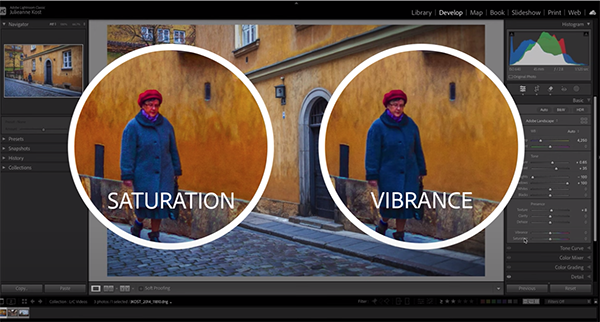
Another technique that many users prefer is to manually employ Lightroom’s simple Saturation and Vibrance sliders. These adjustments provide more control for achieving perfectly balanced tones throughout a scene and Kost walks you through the simple step-by-step process she recommends. Some of the aforementioned enhancements can actually be used together for subtle and very refined results.
As you’ll see, Lightroom provides a number of ways to achieve ideal colors. The trick is understanding which tool(s) to use when. Once you understand the concept you’ll have it made in the shade (and in the sun too).
We strongly urge you to become familiar with Kost’s instructional YouTube channel where there’s an abundance of information for improving your workflow, or even solving problems that you confront on the fly.
And don’t miss the tutorial we featured with another post-processing expert who demonstrates how to give landscape photos a beautiful, dreamy appearance with a Lightroom technique that anyone can master with ease.
We’ve all had the misfortune of returning from a shoot, only to discover that our “great” images are soft and unfocused. This problem can be overlooked if it’s extremely rare, but if it happens consistently there are a few problems that must be resolved.
This tutorial from the Photography Explained YouTube channel will help diagnose your problems so that you’ll “get crazy sharp photos with any camera every time.” Our unnamed instructor is an experienced amateur, and he puts it like this: “I know how frustrating it can be to return home with blurry or soft images, even when you feel like you’ve done everything right.”
The goal of today’s lesson is to fix your focusing issues once and for all in the next few minutes. One common cause is that your shutter speed is simply too slow to freeze subject movement in the scene. This setting is especially important in “low-light situations when your camera is struggling to gather enough light.

Another snafu occurs when the focus point you selected is in the wrong area within the frame. The checklist in the video indicates these and other potential problems, along with straightforward solutions for each. So be sure to make a screen grab for future reference when and if you confront soft photos in the future.
The video provides a comprehensive rundown of every concept on the list, with a bunch of key camera settings like exposure mode, choosing the appropriate ISO, and when it’s best to enable or disable Auto ISO. And, of course, you’ll learn how Aperture and Shutter Speed settings factor into the equation.
There’s also a bunch of valuable shooting advice for avoiding “operator failure” if you know what we mean. Here you’ll pick up effective suggestions for holding a camera steady, focusing tips that make a big difference, and a few more tricks.
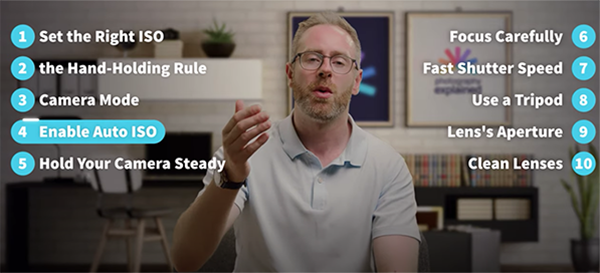
The instructor adds an important reminder with regard to a frequent oversight; namely, failing to clean the front element of a lens. That’s because dirty glass can create a whole host of image-quality issues. Finally, there are times when you’ll have to rely upon a sturdy tripod to achieve tack-sharp photographs.
The popular Photography Explained YouTube channel is designed to help hobbyists and other amateurs quickly enhance their skills, with videos on shooting techniques, gear recommendations, and solid advice for configuring your camera in a way that delivers the best possible photograohs.
We also suggest watching the related tutorial we featured with another helpful expert who explains how he captures sharp, handheld photographs in the field—even in low lighting conditions or when shooting with a long telephoto lens.
Professional photographers are always on the lookout for reliable ways to streamline their workflow, automate tedious, repetitive tasks and bolster the consistency and clarity of their creative vision. Thousands of photographers worldwide have incorporated Neurapix into their post-processing procedures. Two highly successful pros tell us why they adopted Neurapix and how Neurapix has affected their businesses.
With more than 100 million processed images, Neurapix is a major player in the AI-based image processing arena. Their advanced technology analyzes how you process and edit Raw images and learns your individual style and preferences. It then generates dynamic, fully-adjustable SmartPresets that can be used as plug-ins in Adobe Lightroom Classic to replicate your post-processing patterns—automatically. Neurapix can edit hundreds of your photos in just minutes, applying your personal method and taste with consistent and excellent results.
 Meet the Pros
Meet the Pros
We interviewed two professional photographers to learn about their experiences with Neurapix.
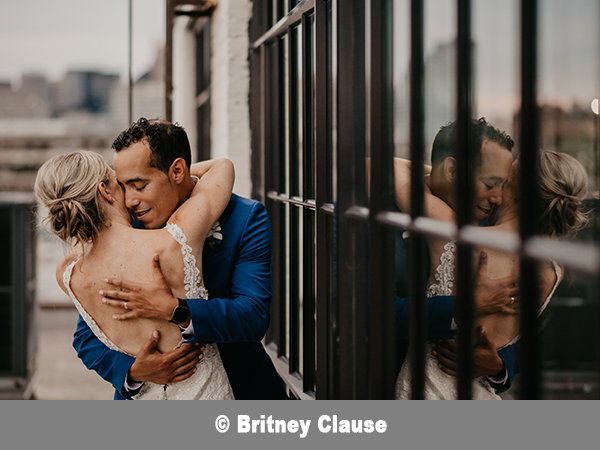
Britney Clause was a wedding and portrait photographer for 12 years and now works as a photographic solutions analyst. In this role she reviews photography programs that help photographers streamline their workflows and enhance overall user experience.
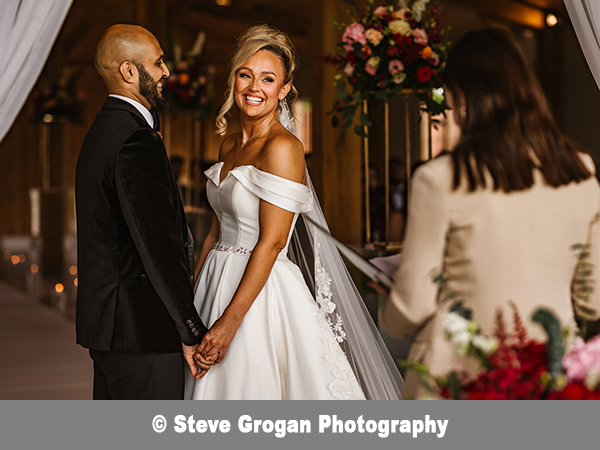
Steve Grogan is a documentary wedding photographer based in Manchester, UK. He describes his approach as “100% natural documentary, photographing real moments as they happen” and has been using Neurapix for about six months, having previously used another AI editing service.
What Neurapix Does for Photographers
When asked to describe the impact of Neurapix, Britney said, “Previously, I outsourced larger volume sessions and weddings, which gave me time to focus on marketing and shooting. However, the turnaround time was about a week, followed by me having to make corrections to the edits. With Neurapix, I can edit locally, and the AI closely matches my style, needing only minor tweaks here and there. In my experience, that streamlined workflow means I can get images delivered in just a few hours.”
To the same query, Steve told us, “Using Neurapix has reduced my editing time by around 50%. I’ve always taken great pride in my post-production work. I’ve never been the type to just apply a pre-set then move on; for me it’s super important to ensure each image is the best it can be before I deliver a gallery to my couples.”
“Neurapix has freed up countless hours of time for me to focus on the other areas of my business which have sometimes become neglected,” Steve added, “such as my marketing and social media strategies. Ultimately, having more time available in my working week to promote my business via social media and search engine optimization means I’m in a strong position to secure the wedding bookings I want each year.”

Neurapix Ease of Use
“Neurapix is incredibly user-friendly,” Britney said. “The tooltips and guides are clear and easy to follow. These helpful elements are integrated directly into Lightroom, making it seamless with my workflow. The speed of the Neurapix SmartPreset is incredible. The quick editing allows me to spend more time being creative and less time stuck behind the computer.”
“I love the fact that it’s integrated into Adobe Lightroom Classic,” Steve agreed. “It’s incredibly simple to use and I was up and running within just a few minutes of registering. I also love that it is always learning with each batch of freshly edited images that you submit to retrain the algorithm. Over time as I tweak my edits, Neurapix will adapt accordingly providing even more consistent results.”

Streamlined Workflow Means Time Saved
“For me it’s all about time-saving,” Steve went on. “The post-production part of being a photographer has always been very labor intensive, using technology to slash my editing times pretty much in half has been a game changer for me. I now have more hours available each week to commit to my social media channels as I was beginning to neglect these a little, particularly during the busier summer months of weddings.”
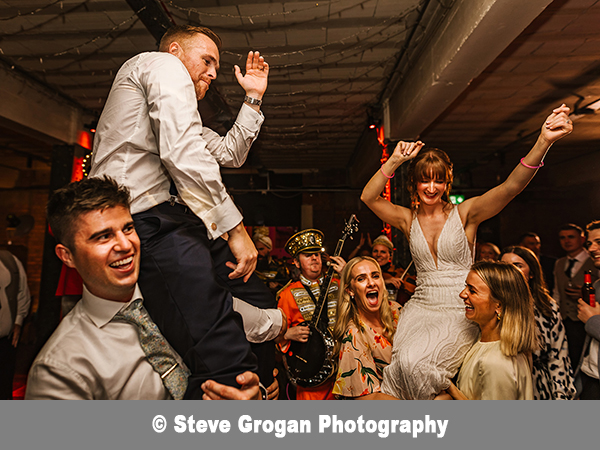
He continued, “What Neurapix does is give you a fantastic starting point for which to go on and make your own tweaks to your images. It saves you a huge amount of time whilst also providing the artistic freedom to make any tweaks or subtle changes if the AI doesn’t get it quite right. A little patience is required initially, as the AI learns each time you feed it more completed images, but patience is rewarded and soon you’ll wonder how you managed your workflow without it.”
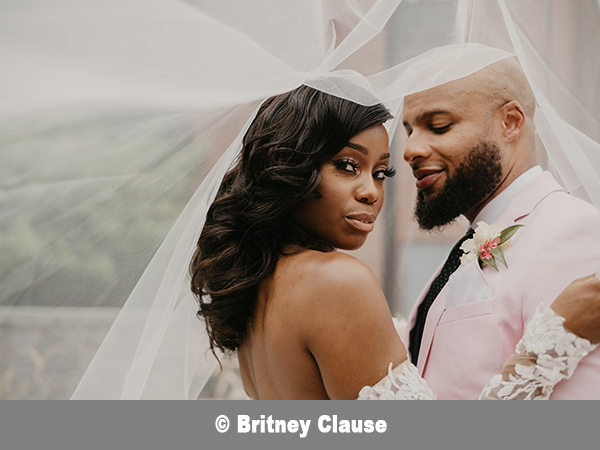
“During testing, Neurapix edited 100 photos in under 10 minutes, a task that would usually take me over two hours,” said Britney. “The AI closely replicated my style, freeing up my time for more creative pursuits.”
Performance
Neurapix begins to learn your style after an initial batch of just 20 edited Raw images, but training with 500 edited images makes the dynamic SmartPresets even better. So far, photographers around the world have created more than 11,000 SmartPresets in aggregate.
How Much Does it Cost?
Plan starts as low as 3¢ per photo. Optional features, regardless of which and how many are selected, always cost an additional 1¢ cent per photo. Edits are performed on Neurapix’s servers under the Pay-per-Picture model. Neurapix manages and runs its own servers independently. They are located in Germany and ensure GDPR-compliant data protection.
Neurapix also offers a flat rate plan. At this level, editing is local and all upgrades and add-ons are included. If you edit 3000 or more images per month, the Neurapix flat rate plan is more cost efficient. The flat rate plan is priced at $49.95 per month as an annual plan, or $79.95 on a month-to-month basis. Probably the biggest advantage of local editing is the faster delivery time of the results: The first edited images appear after just a few seconds and can be checked immediately, while the other photos are finished in the background.
For a free trial of this amazing software, visit Neurapix and get 2,000 free edits instead of 1,000 via this special Shutterbug link.
—Shutterbug Staff
